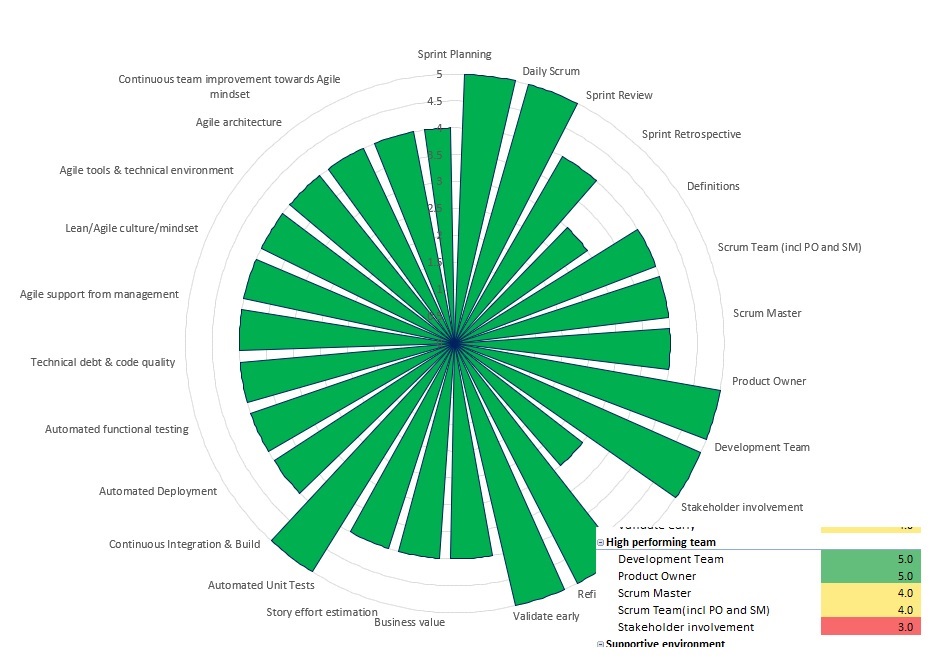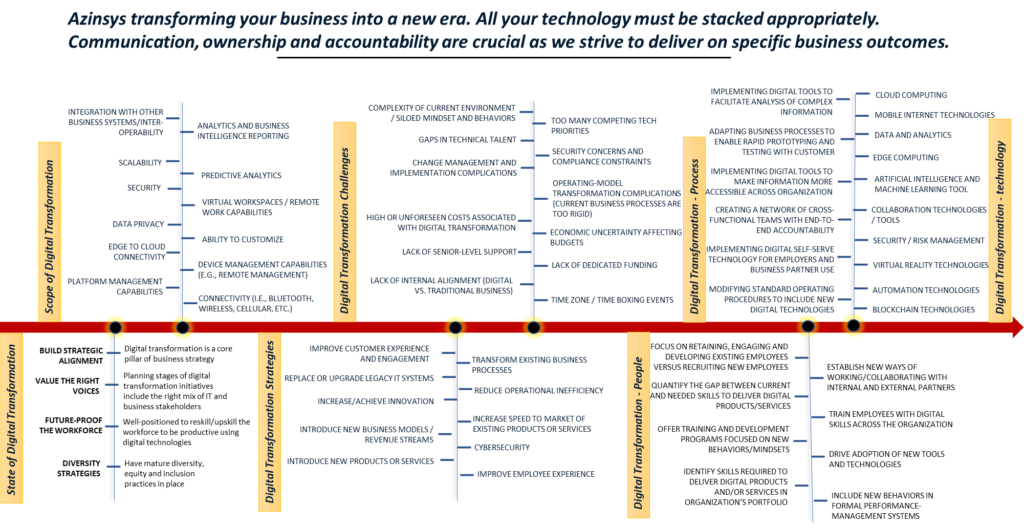
EARLY ASSESSMENT
- Build a structure for cross-functional teams
- Tailored for the Clients and project workflow
- Build KPI’s and tools to measure the progress
HANDS ON TRAINING
- Build cross-functional teams, pipelines and tools
- Reinforce agile practices with real time examples
- Hands on training and deliver agile fluency metrices
LEAD AGILE
- Build full stack agile team, CI/CD, DevOps with right tools
- Agility to win the market with lean process
- Enterprise agility, core solution to problem statements

97 percent of respondents “agreed” or “strongly agreed” that organizations will not remain competitive unless they radically adapt to the demands of the digital era.
►Establishing personal communication across all team members and stakeholders
►Aligning development to business goals with the business context, Vision, and Team/Program PI Objectives
►Identifying dependencies and fostering cross-team and cross- collaboration
►Providing the opportunity for just the right amount of architecture and Lean User Experience (UX) guidance
Agile Mindset – Real time transformation
We build and lead an agile organization, it’s crucial that senior leaders develop new mind-sets and capabilities to transform themselves, their teams, and the organization.
– Meet our Team
Building an Agile Team
Forming cross-functional Scrum Team
Agile doesn’t define any Team, the framework defines the team. Scrum is a framework that defines the team members, which can be different for Kanban Team or SAFe Team
- The power of a high performing team “We, the work, and the knowledge are all one.
- A self-organizing team dynamically interacts with itself and the organization
- Team member create new points of view and resolve contradictions through dialogue
- The team is energized with intentions, vision, interest and mission
- Leaders provide autonomy, variety, trust and commitment
- Teams create and challenge norms
- There is creative chaos vis demanding performance goals
- The team is challenged to question every norm of development
- Equal access to information at all level is critical
” It is amazing what you can accomplish if you do not care who gets the credit”
Why cross-functional team
- Optimized for communication and delivery of value
- Delivery value every two weeks
- Build quality in, at every stage of the process
Different type of teams
- Stream-aligned Teams
- By product, Solution, or Service
- By Customer or market segment
- Platform Teams
- Sets of services consumed by others
- Complicated Subsystem Teams
- Highly specialized system components
- Safely critical system elements
- Part of cyber-physical system
- Enabling Teams
- DevOps implementation
- Security Environments and configuration
